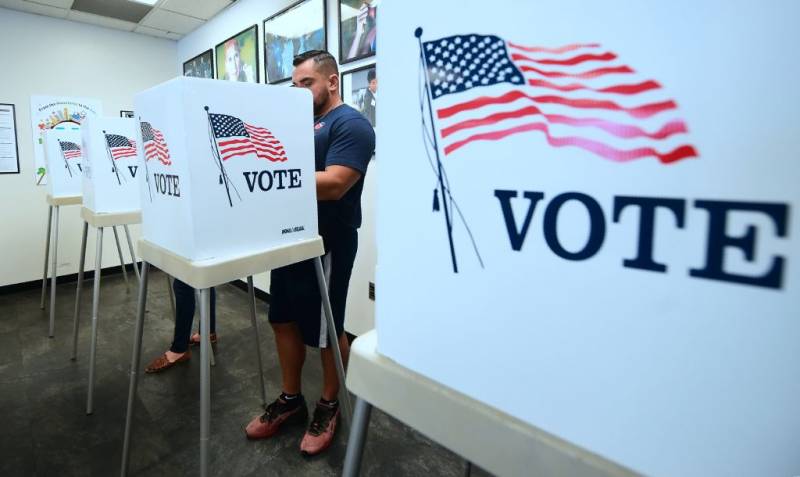After months of public meetings on Zoom and more than 30,000 comments and suggestions, California’s Citizens Redistricting Commission on Tuesday unanimously approved new electoral districts for the next decade that will likely cement Democrats’ huge political advantage in the state.
Following a Tumultuous Redistricting Process, California Unveils New Electoral Maps

The independent commission members, five Democrats, five Republicans and four without any party affiliation were tasked with using 2020 census data to create 52 new congressional districts and 120 new legislative districts.
After many draft versions, including some of which were mercilessly derided by redistricting nerds on social media, the commission settled on maps that create a new political reality for incumbents and challengers alike.
“This is the kind of redistricting that we should have across the country and up and down the state. This is the model,” said political data guru Paul Mitchell, vice president of Political Data, Inc. “And yes, people watching it might have been cross-eyed looking at maps or wondering what they're doing. But the goal is equitable redistricting and redistricting that isn't tainted by politics or self-interest.”
“All Californians should know that these lines were not drawn with the kind of partisan or incumbent lenses as so many other redistrictings are around the country,” he added.
Of course, not everyone would agree with that. Among the most outspoken critics was San Jose Mayor Sam Liccardo, who was upset that the new maps carved up his city into four new congressional districts.
"The great concern for many of us here in San Jose is that [we] will be the only major city in the United States that will not be able to say that they have a member of Congress whose district includes a majority of residents from that city," Liccardo said.
"And that has great concern for me as mayor because for the next 10 years, I want to know there's someone in Washington who believes that our city's interests are primary and is not going to put the interests of perhaps wealthier, more influential and affluent suburbs above those of the one million residents of my city," he added.
But not everyone saw it that way. Whoever represents those four districts in Congress will likely have San Jose top of mind. Whether the same can be said for some of the constituents in more rural parts of those districts remains to be seen.
Mitchell said his concern is not whether the new San Jose lines will make it harder for “community interests in Monterey and San Benito to elect a candidate … with the principal focus of what's good for the farmworkers in the southern portion of the district because they are not the plurality of the voting strength or political power in those districts.”
The new maps had to eliminate one of California’s 53 congressional districts, which ended up being the Los Angeles district now represented by Democrat Alan Lowenthal, who recently announced his retirement. The new district includes parts of L.A. county and Orange County, and it’s unclear who will run to represent it.
In fact, the prospect of the new districts no doubt contributed to decisions by five members of Congress — four Democrats and Central Valley Republican Devin Nunes — to leave their jobs without seeking reelection.
In the greater Bay Area, Democrat and U.S. Rep. Josh Harder’s district anchored in Modesto will have more registered Republicans than his current one, leaving some to think he may run in a friendlier district nearby. (Members of Congress are not required to live in the districts they represent.)
The new lines will likely make it harder for some Republicans to win reelection, including David Valadao, R-Hanford, Mike Garcia, R-Santa Clarita, and Michelle Steel. R- Seal Beach.
Overall the new maps will make about a half dozen congressional districts competitive, a stark difference from other states where politicians gerrymander seats to protect incumbents.
The commission also drew new lines for Assembly, Senate and Board of Equalization seats. In San Francisco, earlier versions of the lines mobilized minority groups to push for diverse districts.
David Lee with the Chinese American Voters Education Committee said minority groups were alarmed by earlier maps that would have divided their political power, "and in fact, split the Asian-American community, split the African-American community, split the LGBT community, and split Latinx communities,” said Lee. “And I think that more than anything brought all of us together.”
Lee was especially worried about the 17th assembly district held by David Chiu, until he stepped down to become San Francisco City Attorney.
“We had to organize and get people out and bombard the commission meetings with comments and input. And ultimately, they listened,” Lee said.
Mitchell, of Political Data Inc. and a self-described “district whisperer," said a similar process played out in regions of the state with large Black populations.
“In the Bay Area, in the East Bay they drew not just the Oakland district but also a Richmond/Vallejo district that will empower the Black community to have a greater voice in those elections,” Mitchell said.
The commission's work was delayed and complicated by the pandemic, which slowed down the 2020 Census and made in-person meetings difficult. While some lauded the ultimate product, if not the process, as a model for other states, David Lee said the panel never lived up to its promise to make the process fully transparent and accessible to all.
“You really had to be technically savvy and really kind of a nerd to follow what was happening at the commission,” Lee said. “And as a result, a lot of people didn't understand what was happening until the maps got published today.”
Of course, the same can be said of many politicians who now have hard decisions to make about whether to run, and if so, where.
